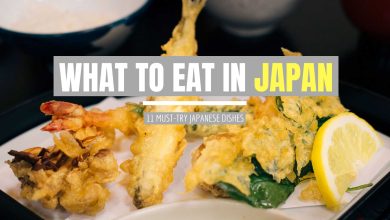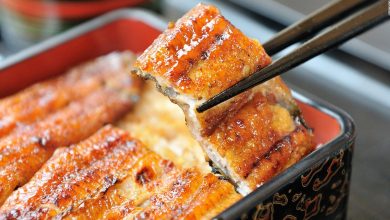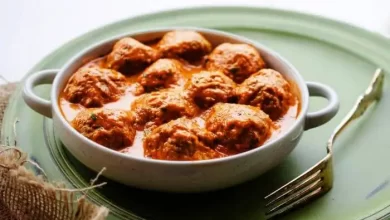More about Japanese vegetables
Wild burdock is widely distributed in the north of Eurasia. Neither Europeans nor Americans like the specific smell of burdock and the special feeling on the teeth when biting. Therefore, they say with surprise: “These Japanese eat the roots of trees.” In Japan, burdock, due to its low calorie content, is popular among young people as a vegetable salad product.
Long burdock is cultivated in the Kanto region, where arable land is located, consisting of volcanic ash and pumice. The lands here are plowed deep and have a good runoff. In the area, for example, Kansai Prefecture, plowing is not very deep. As a consequence of this difference in plowing depth, long burdock is grown in one area and short burdock in another.
At present, long burdock is mainly cultivated, with 50% of its annual production occurring in the five prefectures of the Kanto region. The peak of burdock supply, which continues until March, is December.
Of the special breeds of burdock, Horikawa gobo from Kyoto, Ouray gobo from Chiba and some others can be distinguished. Among them there are burdocks, which are three times thicker than usual ones.
Burdock takinogawa-gobo
The length of this variety is about one meter, and the diameter is about 2-3 cm. Since the early Edo period, takinogawa gobo has been cultivated near the Takinogawa River. Today it is the main type of cultivated burdock.
Louche Horikawa-gobo
It is a type of takinogawa gobo. Its length is about 50 cm, diameter is 6-9 cm. It is hollow inside. Due to the complexity of growing this variety, this variety of burdock is expensive.

A special sensation on the teeth when biting into burdock is due to the presence of inulin (a type of carbohydrate) and brows cellulose in it. According to the content of these substances, burdock ranks first among vegetables. The healing properties of burdock are explained by the presence of inulin and cellulose, which help cleanse the stomach.
Horikavo gobo
Not too noticeable before, burdock has recently become an increasingly popular health product due to its low calorie content. Today, burdock salads and other Europeanized dishes can be found on the menu, which leads to a further increase in burdock consumption. For young women, pilaf with burdock and burdock cookies were invented.
Both the roots and tops of this radish are rich in nutrients. When marinated, daikon becomes a product of long-term storage, inextricably linked with the diet of ordinary people.
Daikon is rich in digestive enzymes. The roots are rich in vitamin C, diastase and other digestive enzymes. In the tops, which are often thrown away.
there are also a lot of vitamins C and A. The bitterness of daikon radish is given by aryl isothiocyanate, a component of mustard oil. This substance promotes the secretion of gastric juice, helps to normalize the work of the stomach, stops sputum production.
The upper part of the daikon roots is used raw, for seasoning sashimi – grated. Daikon is also marinated with rice bran, goes to salads, etc.

The sweeter middle part works well for furofuki (boiled daikon seasoned with miso soybean paste). The closer to the tips of the roots, the bitterer the daikon becomes. Therefore, this part goes to the preparation of seasoning and pickling. The leaves are fried in oil and used to make tsukubai.
Ha-daikon (leaf daikon)
In ha-daikon, the tops are mainly used for culinary purposes. There are specially grown varieties of this variety. For the preparation of grated daikon, it is recommended to use a copper grater. Such a grater is somewhat more expensive than usual, but it has special teeth that keep the cells intact and, accordingly, the taste of grated daikon.
Shogun-daikon
The birthplace of this variety of daikon is the Shogun Temple in Kyoto Prefecture, from which it takes its name. It is considered a traditional vegetable of the Kyoto region. It has a rounded shape, weighs about 2 kg. The fruit of this variety of daikon has a fleshy, sweetish taste that does not boil during cooking.
Sakurajima daikon
The largest daikon in the world. It is similar in shape to a turnip, has an average weight of about 15 kg, but there are specimens weighing more than 30 kg.
The most common type of pickled daikon radish is takuwan duke. The daikon is washed in water, after which, using a shark skin, scratches are applied to the peel. The daikon treated in this way is left in the cold wind from 10 days to 2 months.
Daikon is dried along with the leaves and, like cut rice, is hung on special dryers. If the daikon is exposed to rain during cooking, it may become stained. After the daikon dries to a condition at which it begins to bend slightly, it is lightly pickled, and when the daikon dries to such a condition that a knot can be made from it, it goes to deep pickling. Daikon from Kyoto was loved by aristocrats and admirers of the tea ceremony. Now Kyoto is famous for pickled daikon called “batter”.



